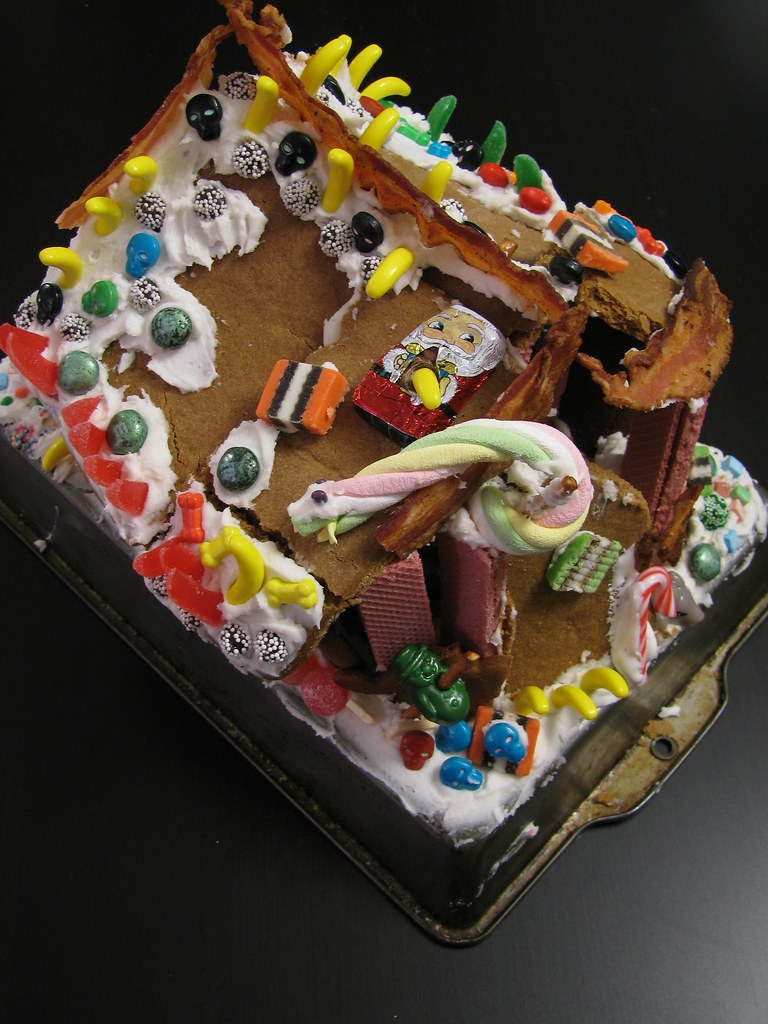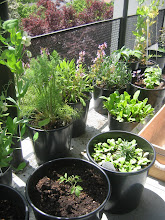The name of this dessert was baffling to me when I was little. In a typically oriental piece of transliteration, dad used to call it "eight precious pudding". I thought he was saying "a precious pudding", which made more sense than ba bao fan. I mean, I got that the 'fan' part meant rice, but the rest- bobble fan?- ba bowl fan? Huh. Beat the hell out of me. I think I was in high school when I finally figured out that the name means something like '8 things in rice'. There's some kind on chinese numerology business going on here. 8 is an auspicious number, so I think the implication is that if you have eight things in the rice, that must make it fancy. If you look up recipes online, a lot of them will call it Eight Treasures Pudding.
But never mind! It is delicious, and takes virtually no effort to make, especially if you buy the sweet bean filling in a can. Here's what you need:
3 cups sushi rice. It will say 'short grain sweet rice' if you aren't in the habit of buying it.
2 or 3 tablespoons canola oil, or lard of you're feeling particularly authentic. Duck fat would be even fancier!
 1 1/2 cans sweet bean filling- there were 2 kinds at the store, and I recommend the one in the green & yellow can. The one in the blue package isn't as good, which I might have known at the outset. The sketchy outdated label design on the L&W brand made me suspect that the contents would be more authentic in much the same way that having a frightening washroom in a chinese restaurant augurs well for the quality of the food. It's a cultural thing.
1 1/2 cans sweet bean filling- there were 2 kinds at the store, and I recommend the one in the green & yellow can. The one in the blue package isn't as good, which I might have known at the outset. The sketchy outdated label design on the L&W brand made me suspect that the contents would be more authentic in much the same way that having a frightening washroom in a chinese restaurant augurs well for the quality of the food. It's a cultural thing.toasted, unsalted cashew nuts
ginko nuts
candied orange peel or pieces of candied orange
dates- regular, or chinese red ones if you can find them.
prunes
golden raisins
maraschino cherries!
This will make enough for 13 adults and 5 children ages 4-7ish.
The only ingredients that are really critical are the rice and the sweet bean filling. The important thing is that you end up with 8 fruits, nuts, etc to decorate the rice with. Maraschino cherries had a decidedly exotic and luxurious mystique to me as a child, and they remain my favorite no matter how horrible I know they are. Other traditional things are lotus seeds, chinese red dates, dried apricots, and maybe dried pineapple or candied chinese plums. I also used a few blanched almonds, but that was because I was really leery of the ginko nuts. See note below.
Rinse the rice 3 or 4 times, until most of the excess starch has been washed off. You could skip this step, if you wanted, but the rice is much easier to handle later if it's been well rinsed. Drain the rice, put it in a rice cooker with 4 cups of water, and cook as usual. When the rice is done, gently toss the oil or fat into the rice with a fork. Let the rice cool a bit while you assemble the rest of the stuff.
You will need a large metal or glass mixing bowl for a mold. Round is traditional, but there is nothing I can think of that should stop you from using a ring mold, a loaf pan, or any other fancy shape you like. The limiting factor is the fact that you have to steam the mold for an hour or two, so whatever you use has got to fit inside another, larger, pot with a lid. I had to borrow my brother-in-law's 5 gallon pressure cooker for this one.

Oil the mold. Arrange the rest of the ingredients in fancy designs in the bowl. Cover them with a layer of rice. I scooped up handfuls and patted it into flat pieces then laid them on top of the decorations. Keep your hands wet while handling the rice, it will stick to you less. Scoop the bean filling into the middle, smooth it out, and cover it with a layer of rice. Gently press the whole thing down and cover it with foil.
I don't have 3 arms. My niece Agatha was helping me with the almonds.
If you mean to eat it more or less immediately, steam it for about an hour- all it needs is to be hot through. If you're making it ahead of time, like I did, refrigerate it until about 2 hours before you want to eat it, then steam it for about 1 1/2 -1 3/4 hours. That much mass will take a while to warm up. About 15 minutes before serving, remove it from the steamer and run a knife around the edge to loosen it up, then invert it onto a serving dish. If it doesn't immediately fall onto the plate, just go away and leave it alone for a few minutes. Presently, the steam trapped in the mold will un-stick the rice, and it will come out. Pick off any little bits of decorations that are still in the mold, and put them back on the pudding. Serve with a little honey drizzled over each person's portion.
Note: Ginko nuts (or seeds) can be found in little vacuum packs in the refrigerated produce section of Fubonn. To prepare them, mix 1/4 cup sugar with 1/4 cup water in a small sauce pan and simmer until the sugar has dissolved. Put in the seeds and simmer them for about half an hour befor using them. They are very strange. They are slightly astringent tasting, sort of like pine nuts, and once cooked in the syrup, they have a texture like gumdrops.
Ginko nuts figure largely in the early lore of my family. Some time while I was in grade school, Dad took Pete to help gather ginko nuts. If you've ever walked under a ginko tree in the fall, you will have noticed that fallen ginko fruits smell like poo. That's because, like actual excrement (and body odor, and rancid butter), ginko fruit contains butyric acid, which is known as one of the stinkiest chemicals in the world. So of course, chinese people love to eat ginko nuts. They are even slightly poisonous! Besides, why would anybody be put off by the idea of coming home smelling like a pigsty, leaving your (only) pair of sneakers and the inside of the car scented like a cesspool from the contents of a 5 gallon bucket of decaying fruit? All you have to do is wash the foul-smelling glop off the outside of the seeds... which involves plunging your arm into the bucket and sloshing them around.
No, thank you. I will buy little vacuum packs in the grocery store.










